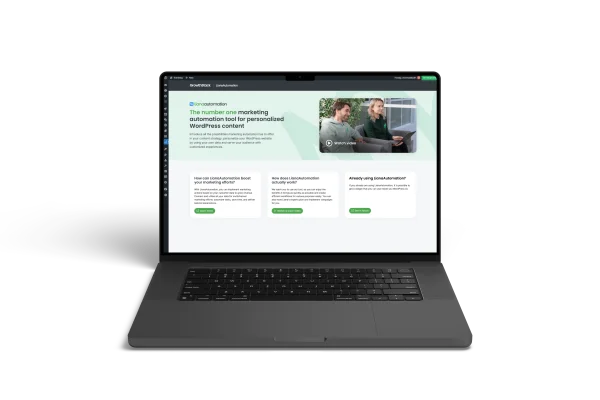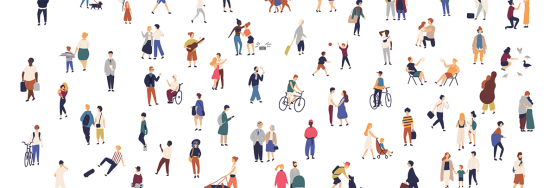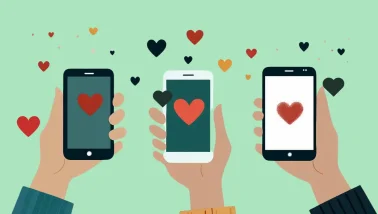Website personalization has clear benefits: 71% of consumers expect personalization from businesses, and up to 80% of consumers are more likely to purchase services from companies that offer personalized content.
Personalization improves user experience, increases conversions, and provides you with a better understanding of your audience.
What is it about?
Website personalization means using data to deliver customized, relevant content based on user characteristics.
You can personalize your content in two ways:
- For easy, low threshold personalization, you an use collected website data about the user, such as location, language, time, and previous browsing history.
- For more advanced personalization, you can utilize other available data, such as segments created in marketing automation tools like LianaAutomation, which can utilize integrated systems like CRM or ERP and connect them to the WordPress system.
Website views adapt and show more relevant content based on the amount of user information that can be utilized. This way, visitors can be offered content that is relevant to them and meets their needs. Personalization helps businesses reach profitable customers and guide them on the website in the desired manner.
Some content management systems include built-in personalization features. For example, our personalization tool is based on the marketing automation solution LianaAutomation for the WordPress platform. This tool is currently the only one of its kind.
Why is content personalization worthwhile?
1. Better user experience on the website
Providing relevant and interesting content improves the user experience, increases website traffic, and reduces the bounce rate. When users enjoy your website, they are more likely to return.
A positive user experience on the website builds trust in your company, helps your customers find the information or service they need efficiently, improves search engine visibility, and increases conversions – just to name a few benefits.
- Offer more relevant and interesting content to different target groups: highlight job openings for one user and target offers based on their subscription or browsing history for another.
- Utilize more opportunities for customer engagement: provide a more personalized user experience by personalizing content based on location, user preferences, or feedback.
- Retain existing customers, acquire new customers, and improve your customer service: personalize content separately for existing customers and prospects.
- Utilize versatile possibilities: customize elements such as navigation, images, texts, buttons, and links for different audiences or rearrange elements and sections on a page based on what is most appealing to the visitor.
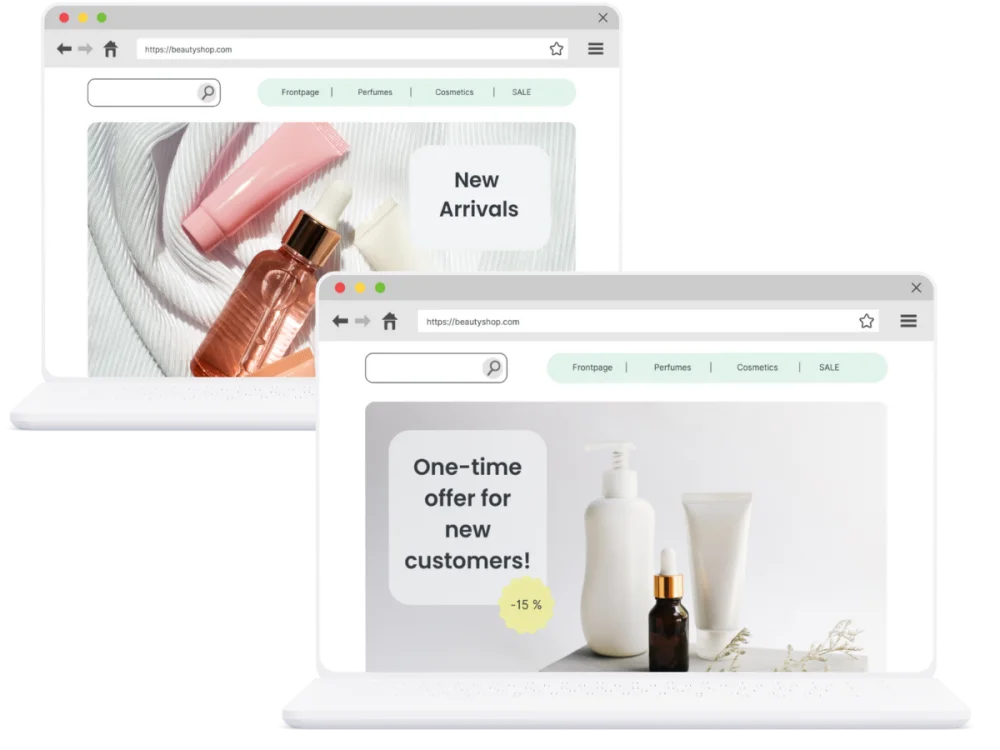
New customers can be offered a discount code to guide them towards their first purchase.
2. Increased conversions
Personalization can increase the number of conversions using tailored elements such as CTA buttons, pop-ups, and landing pages for visitors. The relevance of the content plays a significant role in visitor conversion, thus personalized content leads to more conversions.
Find out which content works for each audience by utilizing A/B testing, and experimenting with which version of the website performs the best. A/B testing itself is a form of personalization as it shows which content leads to more conversions.
- Consider the user's status: if a visitor is already a newsletter subscriber, direct them to book a demo instead of subscribing to the newsletter by personalizing the call-to-action or using personalized pop-ups to convert existing users instead of a form.
- Address, upsell, and utilize industry-specific references: increase conversions by offering relevant services and content to visitors.
- Improve conversion by providing more relevant product recommendations in an online store based on the customer's purchase history. Did you know that 79% of consumers are willing to share relevant information about themselves if they receive accurate product recommendations in return?
3. More effective targeting
Personalization is based on user data collected from the website, browser, device, or information provided by the user. It can be based on the user's actions on the website, login information, or purchases in an online store.
With precise targeting, you can reach the right visitors at the right time with the right content. The data collected through marketing automation and the segments created with it can also be utilized for personalizing a WordPress website.
- Create a visitor profile to offer them relevant content such as offers, articles, or guides.
- Send personalized newsletters based on the data collected from the website and target content using marketing automation.
- Build dynamic campaigns that reach prospects at the right stage of the buyer's journey.
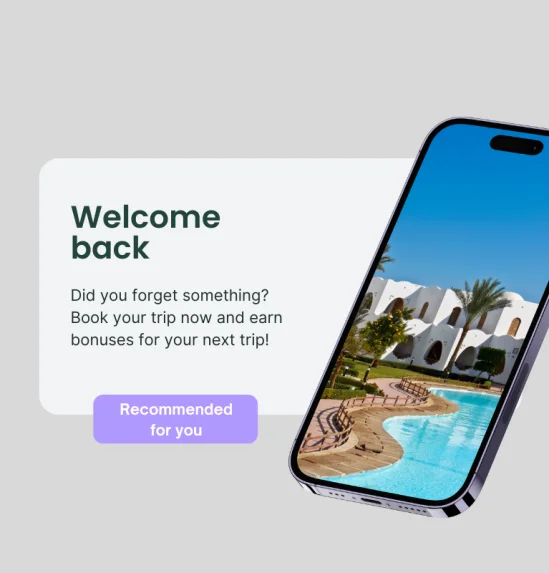
Welcome back a returning customer and offer them personalized recommendations.
4. Better understanding of users
Personalization allows you to gain a better understanding of users' interests and needs, enabling you to produce content that is appealing to them and keeps them engaged on your website.
When you know your users' needs and understand what they are looking for on your website, you can effectively guide them toward the right information, contact, or purchase. This way, defining the quality of leads coming through the website becomes easier, and your sales team can be presented with more ready-made, high-quality leads. Personalization also helps reveal hidden sales potential.
- Guide customers on the website using various elements and offer completely different versions of the website based on their choices.
- Further improve your customer understanding by collecting visitor information through forms.
5. Increased customer loyalty
Show that you understand your customers and can continue to meet their needs by providing them with relevant content, recommended products, and suggestions that align with their browsing or purchase history. This way, you are more likely to retain them as customers.
- By engaging your customers, you cultivate brand loyalty, so encourage them to revisit your website by recommending value-added content related to what they have already consumed.
- Show your customers that you care: reward loyalty with targeted and personalized customer offers and programs.
Website personalization is not yet a widespread practice among marketers, so by utilizing personalization and the improved user and customer understanding it provides, you strengthen the positive perception of your brand and gain a clear competitive advantage.
What types of content can you personalize?
Personalization can involve using texts, images, videos, pop-ups, or colors based on what you want to offer to each target group. Personalization can be done at a detailed level, such as by modifying the CTAs' prompts, shapes, or colors. Additionally, you can utilize adaptive forms and conduct A/B testing to see what works and what doesn't and develop your content based on the results.
At its best, users can be presented with completely different versions of the website based on their data. For example, the view of a returning user or customer can differ significantly from that of a new user, as the view for returning visitors can be personalized starting from the navigation: what pages they last visited, where they spent the most time, what products they viewed, or whether they subscribed to the newsletter. All this information can be utilized in content personalization.
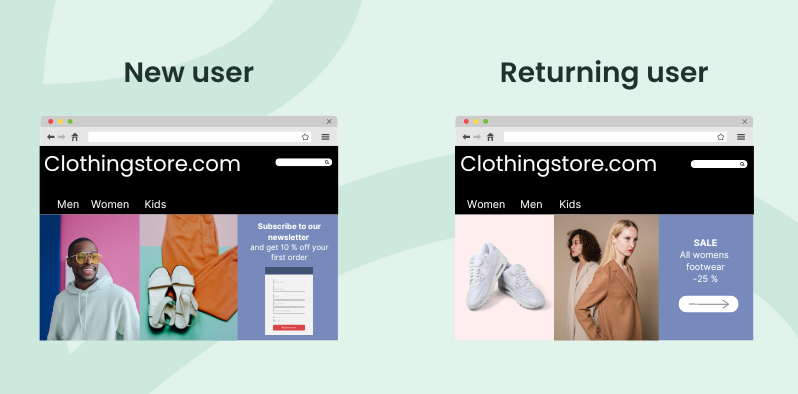
Utilize variables in defining audiences and targeting content on the website
For website personalization, it's important to identify and define desired audiences, so you know who to target, how, and what kind of content to target them with.
Define audiences using variables such as:
- Customer status: Is it a lead, hot lead, customer, or former customer? Target messages based on where the customer is in the decision-making process. For example, encourage them to book a demo presentation or a meeting with an account manager, or offer benefits to customers returning to your brand.
- Personalizations based on business data and industry: Provide industry-specific articles, offers, and product and service suggestions to corporate customers and utilize information about the company's size.
- Location and area: Suggest a specific language version of the website based on the user's location, use appropriate imagery, promote local events, and recommend content or products preferred by other users in the same area.
- Deepening customer relationships: Utilize cross-selling and upselling techniques for existing customers, propose new content within their areas of interest, and welcome returning customers.
You can utilize practically all customer data available to personalize website content. Conditions may include, for example, registering for a webinar in 2023 or visiting your blog 20 times in the past year.
Can website personalization go wrong?
Thoughtful content personalization is rarely risky and definitely worth trying if you haven't done it yet. By considering potential problem areas, you can reduce the risk of customer frustration or, in the worst case, losing customers.
Carefully consider using variables such as name and gender to avoid triggering unintended reactions through personalization. Use name information only when the underlying data is accurate; this way, you avoid greeting your customers with "Hey -, what's up?" Assuming gender, on the other hand, is often unnecessary, as you cannot be certain how your customers identify themselves.
Personalization is particularly successful when done subtly. Customers feel they receive more personalized service, yet they may not necessarily differentiate the personalized content from the rest of the website's content.
Do you want to personalize your WordPress site with marketing automation?
With LianaAutomation, you can create personalized website views based on precisely defined segments. Use A/B testing to find the most effective content and track and optimize your site's performance with advanced analytics features.
With the GrowthStack by Liana plugin, you can:
- Personalize content based on website data, such as location and behavior, as well as segments created in LianaAutomation.
- Create multiple versions of the same content and test which one works best. A/B testing helps you find the most effective content for the right target groups.
- Enhance WordPress's basic analytics capabilities. GrowthStack provides detailed, page-specific data to help you improve your results.
